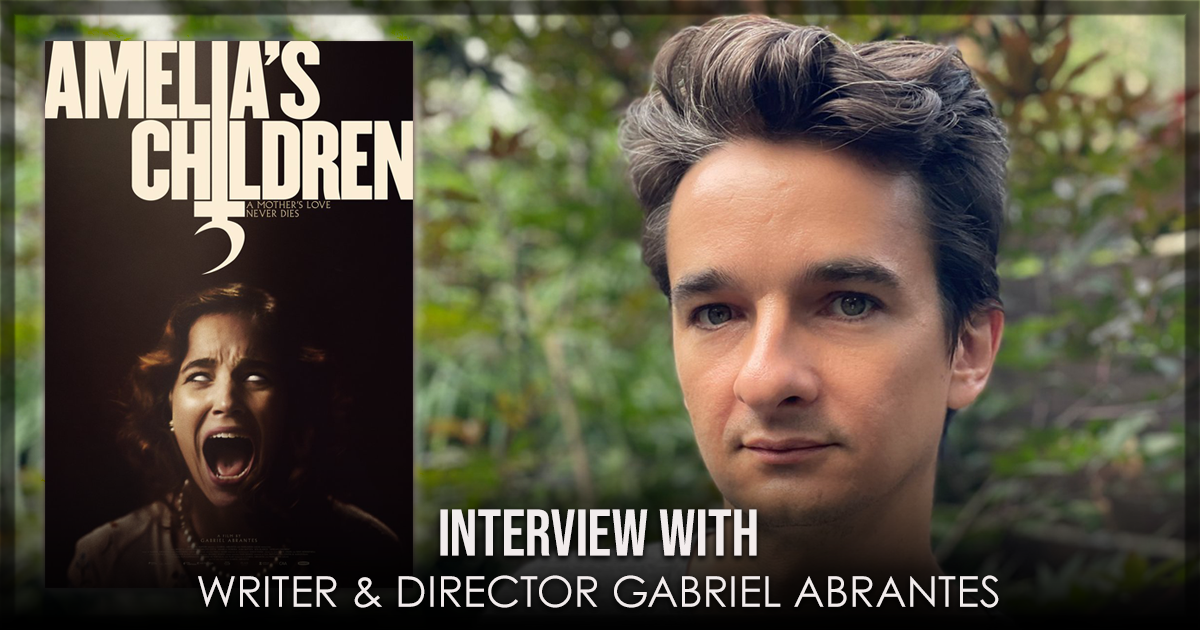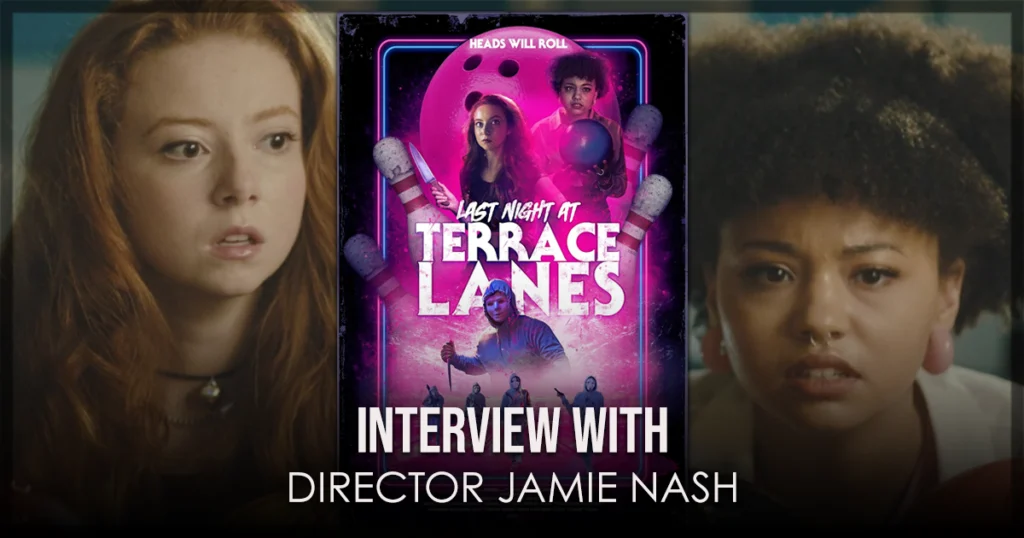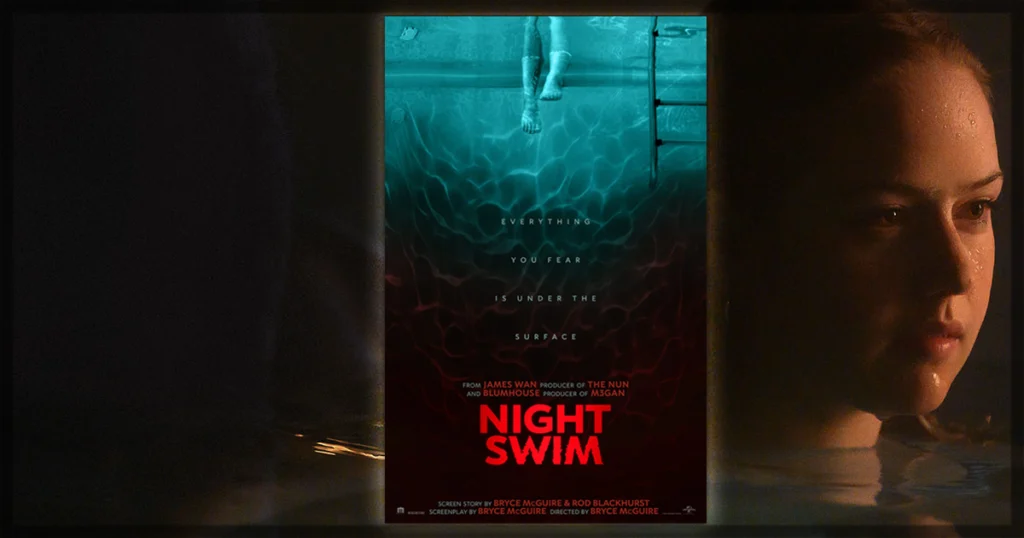Amelia’s Children is the latest movie from writer and director Gabriel Abrantes. Starring Carloto Cotta (as twins!), Brigette Lundy-Paine, Anabela Moreira, and Alba Baptista, this is a horror movie about mothers and sons and well, a whole lot of creepy. Edward, our main character, is adopted. His search for his origins takes him to Portugal where a reunion with his long-lost mother, Amelia, and twin awaits. But all is not well. Shadows from their shared history hold a disturbing truth that will redefine his entire existence. Selfishness and narcissism underpin this supernatural psychosexual world. Abrantes sat down with us over Zoom in an exclusive interview to talk about bringing this hair-raising story to life.
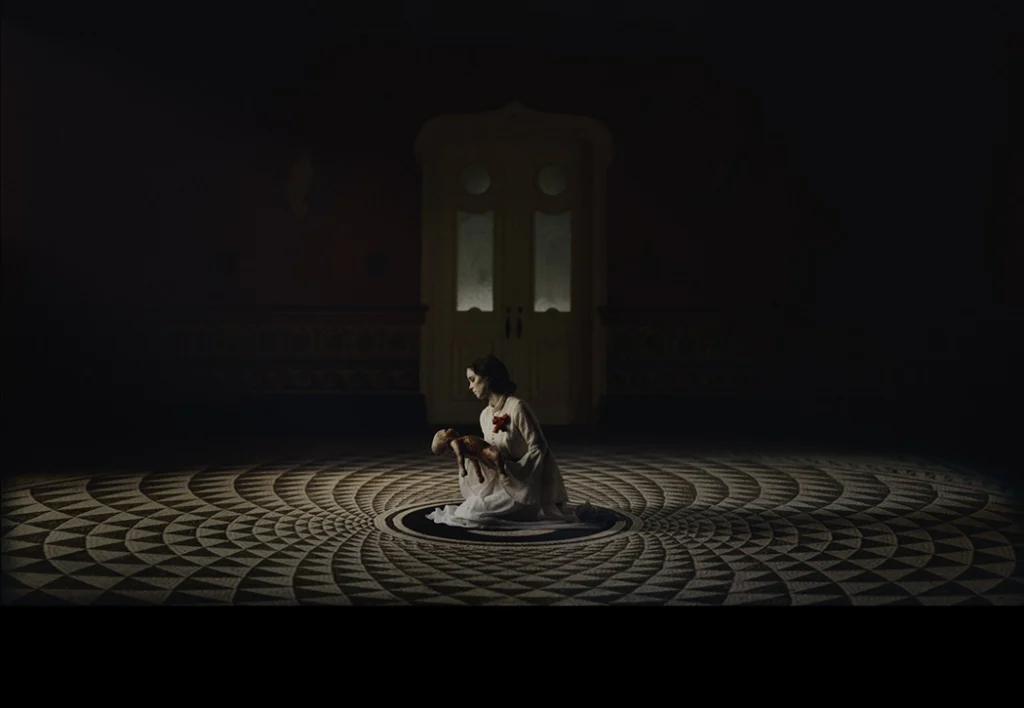
The Interview with Amelia’s Children Writer & Director Gabriel Abrantes
[Editor’s note: This interview has been lightly edited for clarity.]
Ayla Ruby: Hi, it’s nice to meet you.
Gabriel Abrantes: Yeah, good to meet you too.
Ayla Ruby: So I’m just going to jump right into it. I have many, many questions. So can you talk about this project, and how it came to be, and how it evolved? Because you also, in addition to directing it, you wrote it as well.
Gabriel Abrantes: Yeah, so I’ve been making… I made a lot of shorts. I made 24 shorts. I’ve been working since I started, I guess my first shorts like 2006 or something. And I did, my first feature came out in 2018, Diamantino. And it’s a really weird film. It’s like blending a bunch of genres, really out there, very queer film about a soccer player from Portugal, crossing a lot of wires or whatever.
Gabriel Abrantes: And that film did really well. It went to Cannes, and got the grand prize at the Critics Week. And when I was thinking what project I wanted to do next, I knew I wanted to do… That film is in Portuguese and we filmed it in Portugal. It was about Portuguese soccer player. And I was like, I want to do a film in English, and I want it to be a little more genre-y or something.
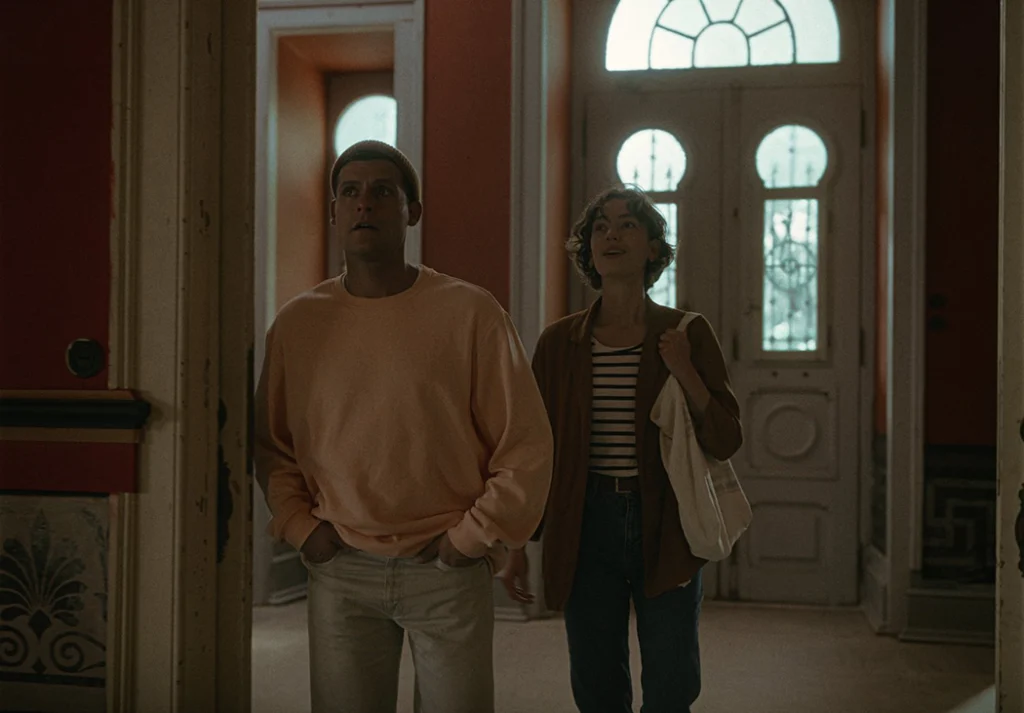
Gabriel Abrantes: And I knew I wanted to do a horror film, so I started brainstorming ideas. I came up with a sort of writing game of, listed out all the monsters from horror, like the ogres, vampires, witches, et cetera, werewolves. And then I had family relationships also listed, of mom, son, grandparents, whatever. And I kept trying to cross them. Like what if your grandpa’s a werewolf or whatever?
Gabriel Abrantes: And when I got to the intersection of witch and mother-son relationships, I was like, oh, this is cool, if your mother’s a witch. I can run with that. And so that was really the genesis of the project. And then I really love the research part of writing a script. And so I was watching a ton of horror, and then reading also some of the classics. I reread Frankenstein, I read Dracula for the first time.
Gabriel Abrantes: And I don’t know why Oedipus Rex came into my head, but I was like, if you crash a monster looking for love, and incest relationships, and Dracula, this can be a cool original horror film. So that’s sort of where it came from.
Ayla Ruby: It’s such a unique take. I would not think to have an Oedipus story in horror, so it was awesome. And I’m just like, there’s so much to unpack in the film. It was really cool.
Gabriel Abrantes: That’s good.
On the evolution of Amelia in Amelia’s Children
Ayla Ruby: So I’m going to, actually, since you mentioned that, I’ll kind of dig into Amelia a little bit. Because she was kind of Pennywise, kind of like Lilith. She was just very, very interesting. Can you talk more about how she evolved? And then there’s this painting too, right? There’s Goya’s painting, and that just is perfect.
Gabriel Abrantes: When I was writing, I had this idea of the mom witch, and I’m like, okay. And I came up pretty quickly with the idea that she had this desire for youth, that that was her want of the monster, and that she’d do anything to get youth. And I thought that was cool, but it was on this plane of cliche, of you got the old wrinkled hag cliche of the witch or whatever.
Gabriel Abrantes: And I was like, especially in conversation with Daniel [Schmidt], who directed Diamantino with me, and he really helped me on the script and thinking about it, even though we didn’t direct together. He was like, “It’s cool, but maybe the witch could be a little more original or something. It might be a little misogynist, or ageist, or something.”
Gabriel Abrantes: And I was like, “All right.” And when I was thinking about that, and thinking about the myth and this desire for youth, this obsession, I was like, okay, so she’s a narcissist. She’s obsessed with aesthetics, and youth, and looking beautiful. And that’s when the plastic surgery thing sort of clicked. And I’m like, oh, okay, that’s perfect. No longer is a monstrousness just being an older woman, which I find very beautiful in its many diverse ways. It’s like, no, the monstrousness is the desire to be young, the self-obsession and obsession with beauty.
Gabriel Abrantes: And so I thought that was the beginning of it. And then in terms of Pennywise, I love Pennywise. I love monsters that are a little campy and yet so scary, like Jack Torrance at the end of The Shining, screaming, the wolf, “I huff and I’ll puff.” It’s so funny to me. And Hannibal, I find hilarious, or even somebody like Frank from Blue Velvet.
Ayla Ruby: Oh!
Gabriel Abrantes: It’s also such an extreme performance, that to me, I laugh a lot. It’s a mix of laugh, and scary, and nervous. And that’s where I really wanted to go with Amelia. When I did that scene with Brigette [Lundy-Paine] and Anabela, where Amelia meets Riley for the first time, and they’re talking about potatoes, and Boise, it was just such a nice mix of so absurd, so weird, so unnerving, but also creepy and menacing. And that for me is really the moment where we locked onto the tone that I was going for in the film.
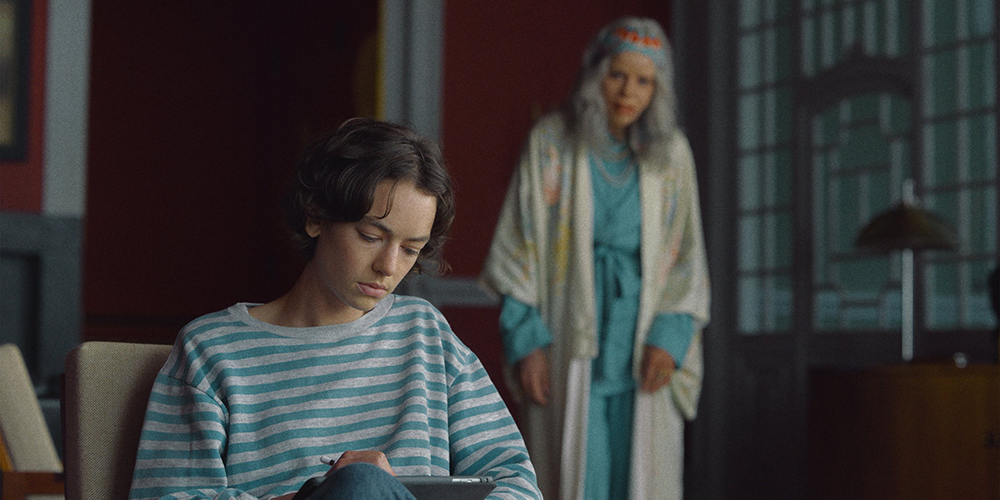
Ayla Ruby: I kind of loved in that scene too, how it was foreshadowing, talking about I think the Puritans, and how it was foreshadowing, oh, she’s really, really fricking old.
Gabriel Abrantes: Yeah.
Ayla Ruby: Older than most humans are. So I thought that was kind a nice touch.
Gabriel Abrantes: Cool. Nice you picked up on that.
On casting Anabela Moreira and pulling off Amelia’s look in Amelia’s Children
Ayla Ruby: So Amelia, Anabela, she’s got these prosthetics on. Can you talk about practically how you pulled that off?
Gabriel Abrantes: Yeah, so we actually did a bunch of stuff. When I did the casting, I was like, I sent out to all the casting agents in Portugal, “I’m casting for Amelia, she’ll play young and old, but send me everybody.” Because I was like, I’ll use one actor for both ages or whatever. And we were actually looking into that stuff, like Face App, or using AI to de-age or age the character or something.
Gabriel Abrantes: So we actually had no limits, in terms of at the time, do we want a younger or older actress. And then Anabela, just in her… It was during COVID, so it’s like people are sending in tapes and stuff. And her tape had just hit that tone, where it was a little perverse, it had just a little bit of spice to it or something. And I thought that was really great. That’s what really set it apart from a lot of the other takes of other actors that might’ve been a little more straight or something, more just creepy or something.
On using the same team from Game of Thrones
Gabriel Abrantes: Anabela had that little perverse, queer smile, that there’s something menacing, even though she’s saying something nice, or whatever. And so that really worked. And then with the prosthetics, we got so lucky. This guy, David Bonneywell and Rita Anjos, his partner, they worked together. And they actually worked on Game of Thrones doing the mask for, what’s it called, the King of the Night? Or…
Ayla Ruby: Oh, I don’t know.
Gabriel Abrantes: Like the Ice People or whatever.
Ayla Ruby: Okay.
Gabriel Abrantes: The people who come from the North, the zombies. So they were doing the prosthetics on those. They’re just extremely skilled. And we were just very lucky that they were in Lisbon. And she’s Portuguese, he’s English. And they did such an incredible job on the prosthetics. Then there was a little bit of a debate, should we go a little further, a little more subtle? And I’m really happy with how she looks in the end. I think it’s like, yeah.
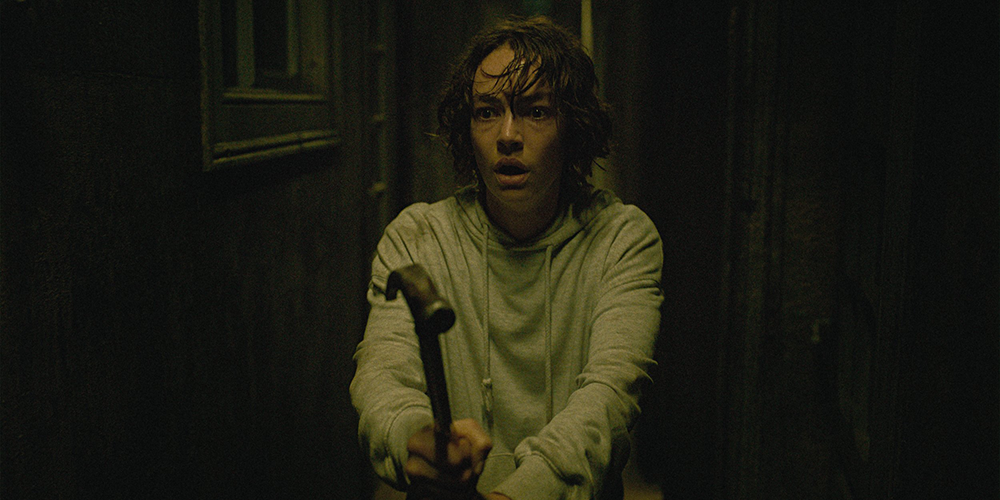
On filming in one main location for Amelia’s Children
Ayla Ruby: It’s very different than how she is through the story. This takes place in one location, right? It seems like that? And it’s a really cool location. Can you talk about how you got that location, what filming was like, if anything was really challenging?
Gabriel Abrantes: Yeah, it’s this big palace outside of Lisbon. It’s in Sintra, which is the hills, where there’s some sort of mysticism associated around that, those hills or whatever. There’s a lot of ruins, and the mystical stones, and hidden tunnels, and stuff like that. And there’s a bunch of palaces. It’s where the aristocracy in kings and queens used to go to chill out during the summer, because the hills next to Lisbon are a little cooler.
Gabriel Abrantes: And so we found this palace, and it’s falling apart, which is why they were rented out to film shoots instead of using it for weddings or whatever, which is probably what they’d use it for otherwise. And so a lot of films actually shoot there. There’s one director in Lisbon that I think has done eight films there, which is…
Ayla Ruby: Wow.
Gabriel Abrantes: So yeah, he just keeps decorating it in a different way for… And he hates it. For him, now it’s a weight to keep shooting in the same place. And we felt so lucky, because we wanted to… I come from a fine arts background, like painting, and sculpture, and stuff.
Gabriel Abrantes: And so I really like the plastic part of making sets. And it’s just something that I am really passionate about. So I really wanted to do it in the studio so that we could build the set from scratch. And then that was a little bit over our budget, so we’re like, okay, can we find a place?
Gabriel Abrantes: And we found this house that you can basically use as a studio. You can change the floor, you can change the walls. You can paint every wall, bring all your furniture in. Because usually when you’re shooting at these older locations, they’ll have furniture there and you can barely move it. It’s too precious to be messed around with by a film crew.
Gabriel Abrantes: And this, no, it was just like a playground for kids to dress up how they wanted and do what they did. So it was a lot of fun to use that house.
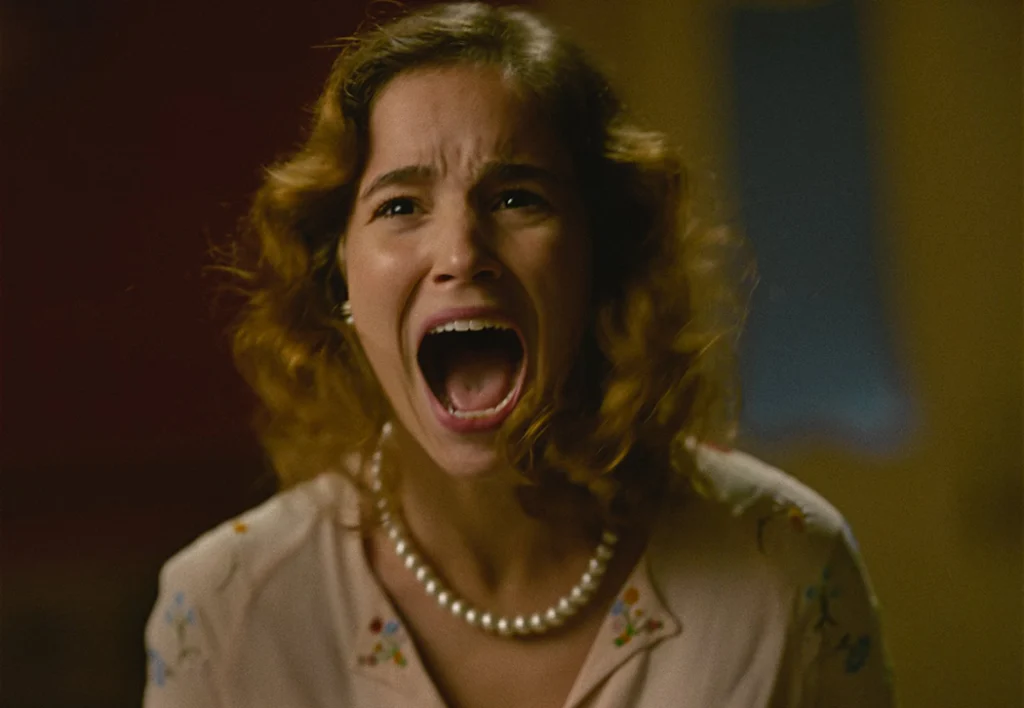
On the lighting in the film
Ayla Ruby: Oh, that’s cool. So you mentioned your fine arts background, and one thing I noticed while watching the film is, at the beginning it’s super, super bright, there’s a lot of light, and then as things unravel, it gets really, really dark. Was that kind of intentional?
Gabriel Abrantes: I don’t think I thought about it. And I think initially maybe the end, I even wanted it to be in the morning already getting light, like this sort of Midsommar idea of let’s do a brighter horror film or something. But then as we were shooting, I did a few rewrites. And as we’re doing the rewrites, we’re losing narrative days. And so it actually ended up being a practical reason why it became night or whatever. But I think it helps. I think it’s nice that what you’re describing of going from a more light atmosphere to a darker atmosphere works well.
On a final message for those interested in Amelia’s Children
Ayla Ruby: Oh, that’s cool. And I know we’re getting close on time, so is there anything leaving off that you really want people to know about this film? Or a message or something you want to leave people with?
Gabriel Abrantes: Yeah, no, I just hope people can go to watch. It’s in a few theaters all over the States, in New York, LA, and then streaming everywhere. So hopefully you’ll watch and enjoy it. And definitely, what we want is people to get a few scares, but also a few laughs, because I really love humor. And yeah, the film should make you laugh a little bit.
Amelia’s Children is now available on digital, on demand and in theaters.
Are you interested in Amelia’s Children? What do you think of the trailer? Let us know on X @MoviesWeTexted.
You might also like…
‘Last Night at Terrace Lanes’ – Interview with Director Jamie Nash

